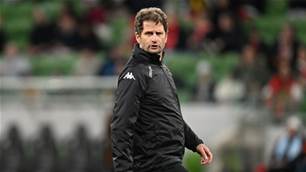Lessons have been learned after a disastrous effort to host the 2022 Men’s World Cup (there are no expensive videos of animated kangaroos and Paul Hogan) but what will FIFA be looking for in its next host and how optimistic can we be?
Before beginning to predict the outcome of the vote, it's worth looking at the decision making process.
FIFA voters will arrive at their decision after considering, risk assessment, a description of the event and a technical evaluation comprising of six criteria.
- Teams and referee facilities: 15%
- Stadiums: 35%
- Commercial considerations, like revenue stream or organizing costs :30%
- Event sites: 5%
- International Broadcasting sites: 5%
- Accommodation (for FIFA officials and fans): 10%
All three remaining bids have strong Team and Referee facilities and stadium capabilities, and all three host international football matches so can provide adequate International Broadcasting Centres, although after the preparations for the Tokyo Olympics, it can be assumed that Japan may have the slight edge in this department.
All federations are concerned with a legacy for women’s football, but Australia/NZ provide concrete ambitions of 50% of all Aussie footballers being female by 2027 and NZ aiming for a 7% increase in participation annually.
Columbia mention being in recovery from recent turmoil and see the World Cup as a catalyst for national unity: the tournament could do great things for women's football in South America.
This may be viewed positively by FIFA as Japan and Australia have strong positions in women’s football already.
The major downsides to Columbia’s bid appear to be unfortunate unavoidable realities.
They highlight the fact that there has recently been a “50% drop in homicides and a 40% drop in kidnappings”.
Columbia suffers from a stereotypical image of violence and these reductions are something the country is rightfully proud of, but it still might disadvantage the bid. Their submission shows the confidence they can control any issues that might arise.
The Columbian bid notes that certain vaccinations are required to travel from overseas while Japan and the AsOne have no such concerns.
Importantly, there are no major sports scheduled in Columbia during that time and the tournament will take place over a period of annual national celebrations. All eyes in the football-obsessed country will be on the women’s world cup.
Japan might appear to have the strongest bid at a glance, they highlight being in their strongest economic position in the post-war period and boast Olympic level infrastructure, but they request moving the tournament from the FIFA preferred dates to provide a better climate for playing and tourists.
Australia and New Zealand’s joint bid has a firm focus on commercial factors.
The aim is to have packed stadiums and unprecedented ticket sales, they will be offering USD $5 tickets for children and the most expensive adult package will be USD $90. Plans to move kickoff times will maximize international television audiences and advertising opportunities.
The fact that Australia recently hosted the Olympic qualifiers at extremely short notice could work in their favour, but the geographic territory is larger than the other three bids and it is unknown how easy it will be to travel between the two countries in a post-COVID lockdown world.
It is impossible to confidently anticipate FIFA voters after Qatar was awarded the World Cup in 2022 despite facing a myriad of challenges other bids didn't, but judging by their criteria, the Aus/NZ bid can claim to have the most clearly defined and achievable goals for legacy and commercial potential.
This is a clear strength compared with other bids. Don’t celebrate just yet, but be excited.
Related Articles

'Timing not right': Montemurro's verdict on Matildas vacancy

Matildas: 'Fourth at the Olympics is honestly the worst place you could come'
.jpg&h=172&w=306&c=1&s=1)












